Review: Queen Charlotte (2023), Part I - Costuming
This was originally posted at Substack, but as Substack's decided to stand behind its policy to allow Nazis to post and monetize on their platform, I'm coming back to Blogger!
Synopsis
A spin-off of the hit show, Bridgerton (2020- ), Queen Charlotte focuses on the eponymous consort and her history. The main action of the plot takes place in the early 1760s, involving the betrothal and wedding of Charlotte to George III and the first years of their marriage: the forthright and confident Charlotte comes to Great Britain and is flummoxed by her kind but distant husband until she learns of his mental illness, which she is determined to help him with. Slimmer subplots are set in the Regency period of Bridgerton, with Charlotte and her children dealing with the loss of her granddaughter, Princess Charlotte, and Agatha Danbury and Violet Bridgerton talking about new love after the end of a marriage.
Overall, I was impressed with the show, to an extent that was a bit surprising! Perhaps it’s that it’s a somewhat more serious drama than Bridgerton - where Bridgerton tends to rest on the strength of the chemistry between the leads and the standard romance-novel situations, Queen Charlotte is mainly a story about Charlotte herself, royal politics, and different types of relationships.
Costuming
Queen Charlotte’s costuming immediately endeared me to the show, because it’s significantly more historically accurate and, more importantly, properly fitting than Bridgerton’s. It’s not fully accurate, no - it’s what I’d call “generically eighteenth century” in that it uses bits from different years/decades/eras.
In the above shot, for instance, Charlotte’s (India Amarteifio) gown has the long sleeves and center-front closure of the late 1780s, as well as the more relaxed skirt silhouette of the time. (Brimsley’s (Sam Clemmett) coat and waistcoat - and indeed all the menswear - are also made with 1780s cuts, shorter/narrower/tighter than what men were wearing in the 1760s.)
In this one, both Charlotte and Augusta (Michelle Fairley) are dressed in gowns that have elbow-length sleeves with ruffles and are open over stomachers - there are all sorts of interesting modern touches, but the basic looks are of the 1760s. I believe at least Augusta is wearing a 1760s hoop as well.
Agatha, Lady Danbury (Arsema Thomas) and the other women (at least, the ones with hoops) generally match the period of the show in silhouette and cut; the serpentine trim on Agatha’s gown is a very fashionable style for the 1750s and 1760s. Lady Ledger has an échelles stomacher with large bows that fits the era perfectly, but the unruffled winged cuffs are more typical of the 1740s. (However, I have to note that matching stomacher/petticoat combos that contrast with the gown are a modern costuming cliché, which I think is appealing to us because it’s slimming: in the period, you were more likely to have gown and petticoat match with either a matching, harmonious, or contrasting stomacher.)
All of the female characters have period-appropriate stays that look comfortable and well-fitting, which is more than you can say for some productions! Gowns also generally have their necklines hitting just above the top edge of the stays, which is also a low bar but seems surprisingly difficult for a lot of movies/shows. So overall: success.
For my part, I love the modern touches. Do I adore costume dramas like The Young Victoria (2009) with an exceptional attention to historical detail? Yes, very much. But I am also a big fan of costuming where it’s clear that the designer knows what the “correct” answer is and then does something else on purpose.
The ensemble that Charlotte wears to travel to Britain is much more blended with modern fashion. Her jacket has a full, ruched shawl collar and magnificently structured ruffles that hint at eighteenth century robings and cuffs, but would be more at home on a modern catwalk. And that’s the point! She arrives in a sumptuous outfit and is immediately told by the controlling Augusta that she needs to dial it back.
(Yes, this is the outfit she wears for the “bones of whales” speech. I’ll just say it quick: whalebone is baleen, which are keratin plates in whales’ mouths for straining krill from seawater. Baleen is also super tough and will not break if you move around too much in your stays in a carriage.)
In the above shot, George (Corey Mylchreest) and the crowd are dressed in generally accurate costuming, but Charlotte is again costumed in such a way as to subtly connect her with modern aesthetics. Her gown is made on overall accurate lines, but the front is made to overlap like a wrap dress, without robings or trim down the opening, and the petticoat that shows through the skirt is a floaty white tulle.
But I don’t just want to talk about the women’s costuming. It’s really common for costume reviews to focus on the gowns, and to note that the menswear is basically accurate (because costume designers often don’t do this same kind of modernity-blending with men’s costuming) - and to some extent that’s true here. As I noted earlier, the men’s clothing is generally made with more clearly cutaway coats and shorter, tighter waistcoats, all of which are more body conscious and slenderizing and therefore more attractive to the modern eye. Compare with a portrait of George III in 1759 by Sir Joshua Reynolds:
This is a year or two before the beginning of the show, but still: the coat is more concealing, the waistcoat comes to mid-thigh, and the cuffs are significantly larger. More subtly, note how narrowly the shoulders are cut in comparison to those of Mylchreest’s George’s suit: in the 1760s, achieving a very close fit in the shoulders was desirable, while the modern taste is for the coat to give a broader line in the same place.
And of course, I haven’t touched on the Regency sections! They are shorter, but still important.
If you’ve seen Bridgerton, you’re well aware that the older Charlotte (Golda Rosheuvel) is always costumed for decades before the 1810s - essentially the same as younger Charlotte. This was done in part for romantic purposes (the costume designers for Queen Charlotte have explained that in this universe, she dresses in “the style she wore when she met her husband, when he still recognized her”) but more because this was already a defined part of her character from the main show. The real Queen Charlotte is often assumed, as she was by the Bridgerton team, to have been stuck in the past sartorially as she had requested that hoops be retained in court dress at the beginning of the nineteenth century. However, while she did do this, she had no opportunity to take it back as George’s descent into his final illness occurred not too long afterward, and she certainly didn’t wear hoops herself outside of the mandatory ones for court dress! The real Queen Charlotte kept up with current fashions.
There’s not much to say about the costuming for Agatha and Violet in the Regency: it’s exactly as it was in Bridgerton, a very stripped-down version of 1810s fashion. The new characters - George and Charlotte’s many progeny - are costumed similarly, the women in rich fabrics and with piled-high hairstyles and the men in black wool coats and silk waistcoats. There is simply too little time spent with these characters for there to be much of a costuming story or characterization-through-costumes! But they are splendidly done, and make it very clear how much time has passed. The corsets appear to be better-fitting than those from season one of Bridgerton.
I’ve also badly neglected to discuss the hairstyles. As the main character, Charlotte has the most interesting hair! The younger Charlotte has natural hair that is worn in a few different ways (you can see them in the screencaps above) - I prefer the very large styles that sometimes mimic the fashions of the late 1770s and 1780s, and sometimes are simply modern. For on thing, they’re visually interesting; for another, they highlight the fact that Charlotte is a Black woman, and that that’s not simply color-blind casting but an important aspect of her character and the story of the show.
Another thing about the overall women’s hairstyles in (the eighteenth century sections of) the show that I love is that they feel more inspired by history. In Bridgerton, most of the hair is simply put in updoes that have more to do with modern prom styles than the Regency, but in Queen Charlotte we have clear eighteenth century influence.
A very common trope in eighteenth century costuming is to give women a single large curl that hangs over one shoulder, which is elegant but not based in anything Georgian. However, in the 1770s and 1780s, some hairstyles did involve symmetrical curls hanging down on both sides, as well as the height, braids, and other curls that we see in a lot in this show. These tall styles and long curls might not be proper to the 1760s, but they’re at least close.
As for the men: need more wigs!
Next time - Part II, in which I discuss the plotlines of the show in greater detail.
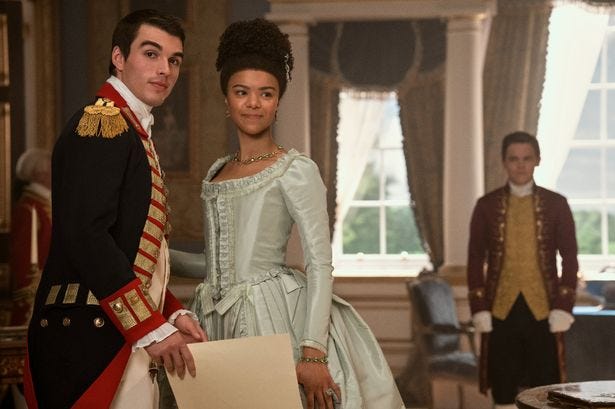
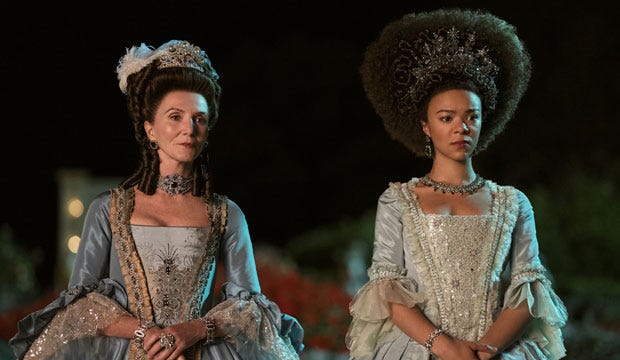
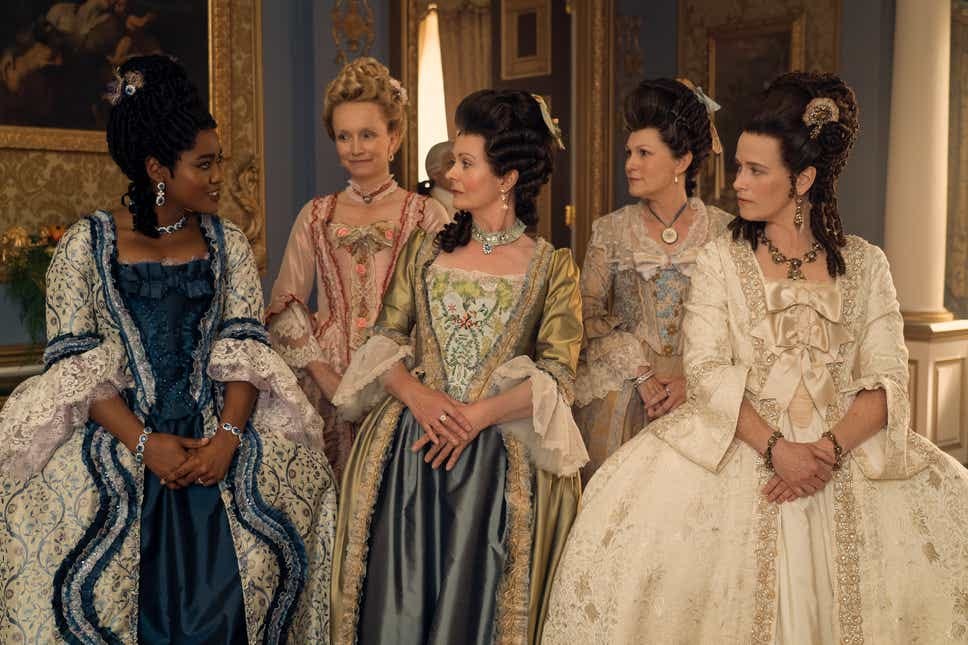
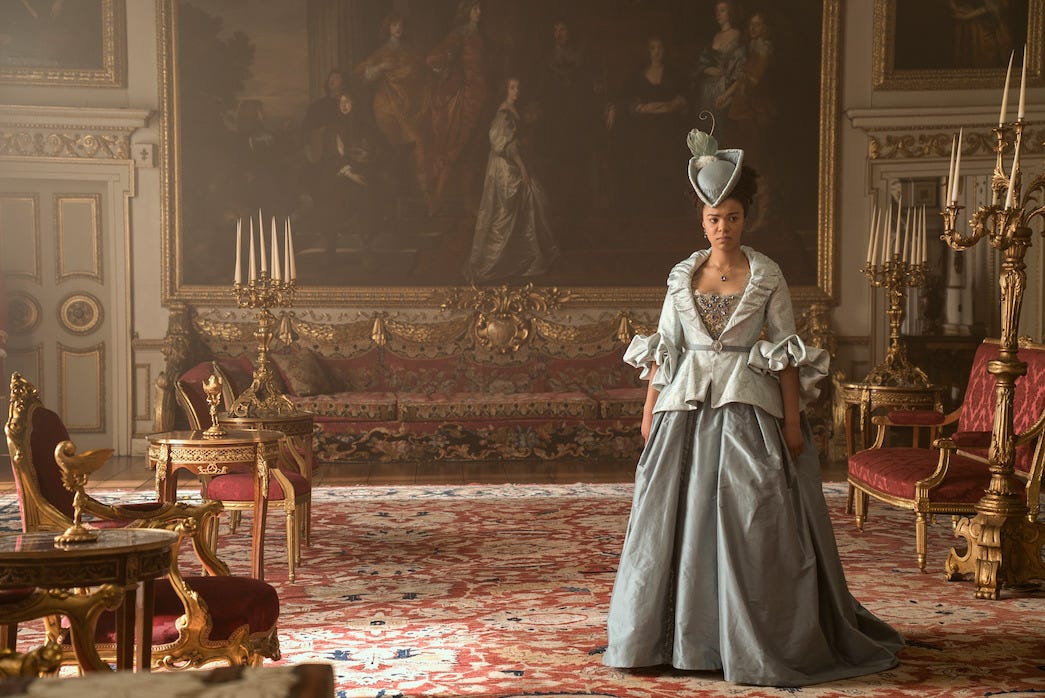
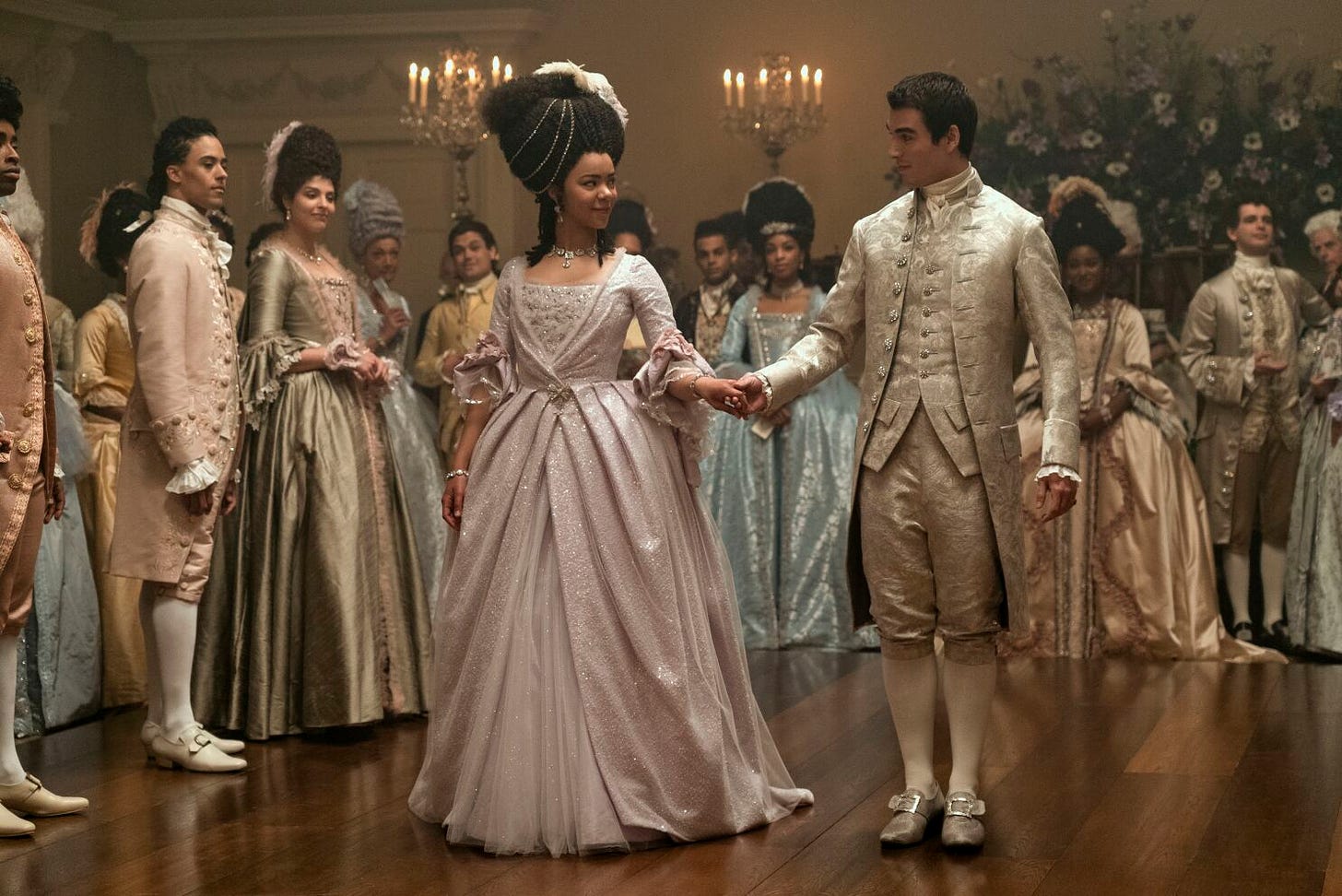
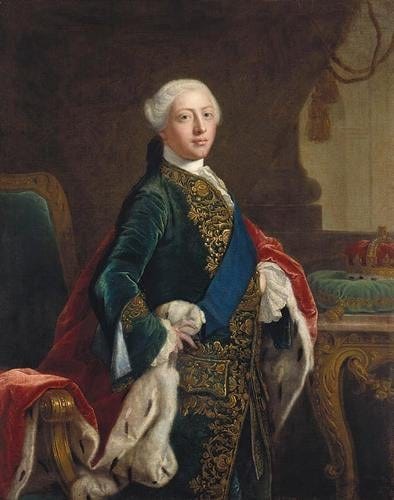
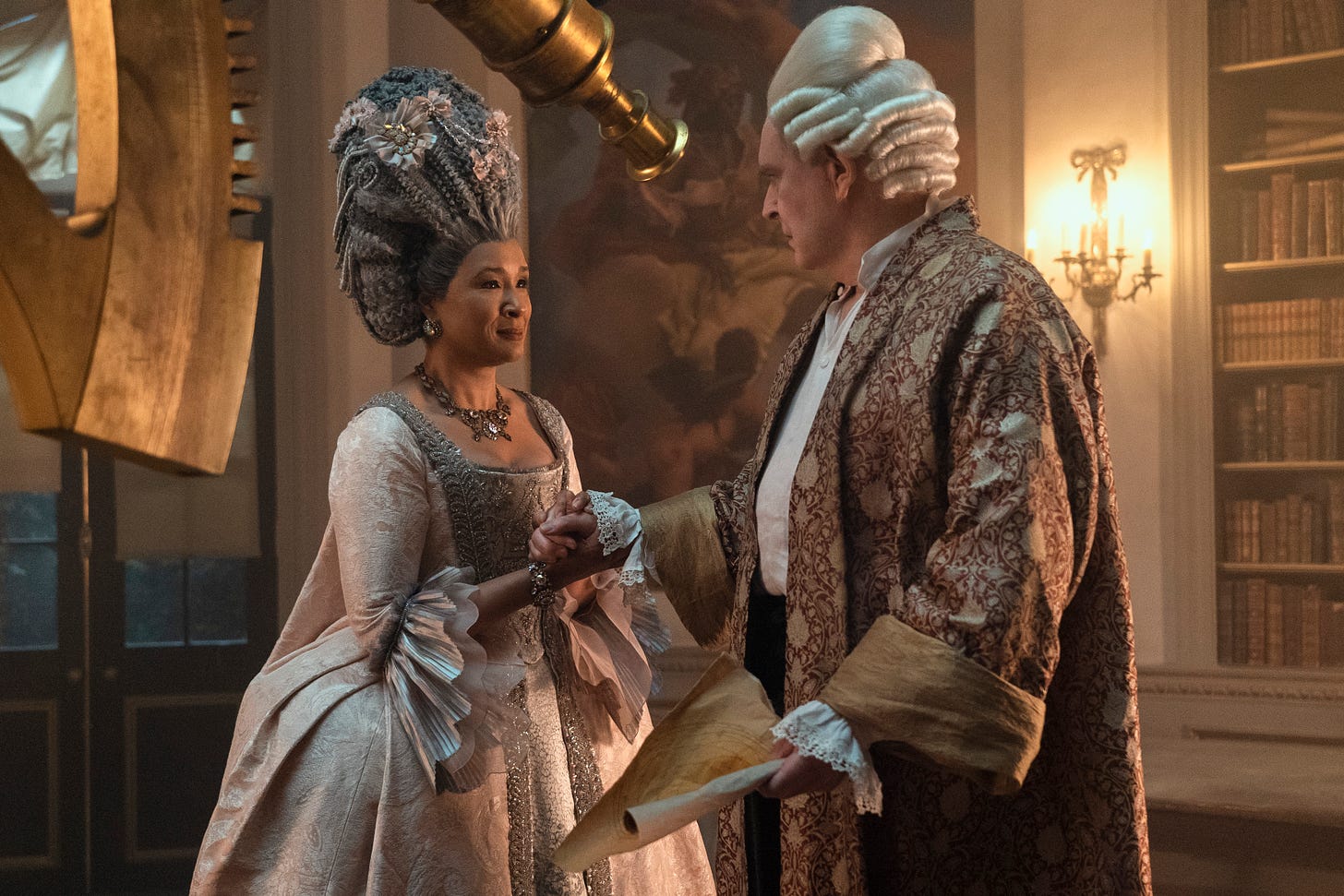
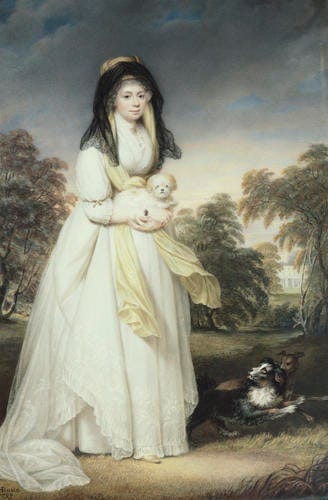
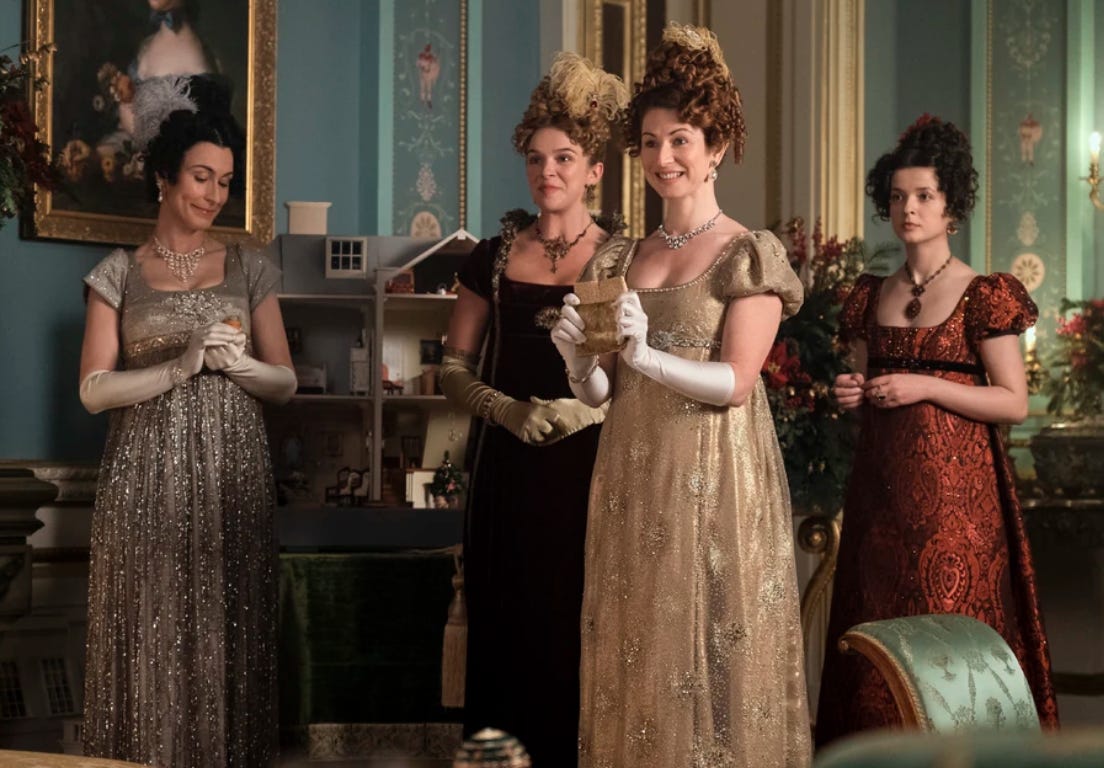
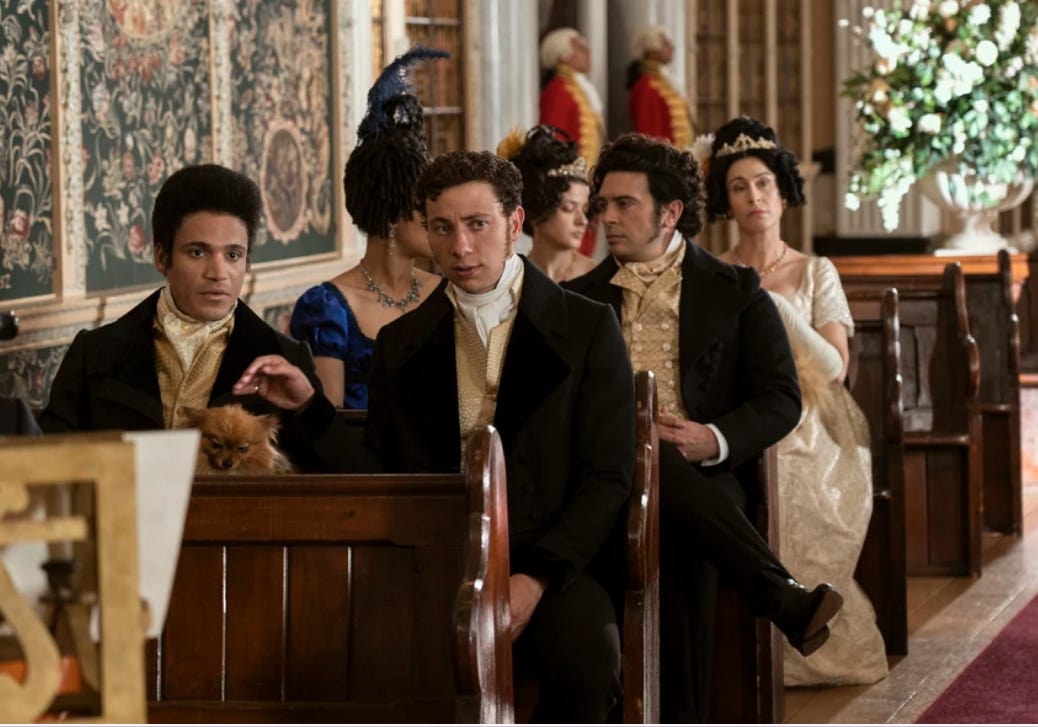
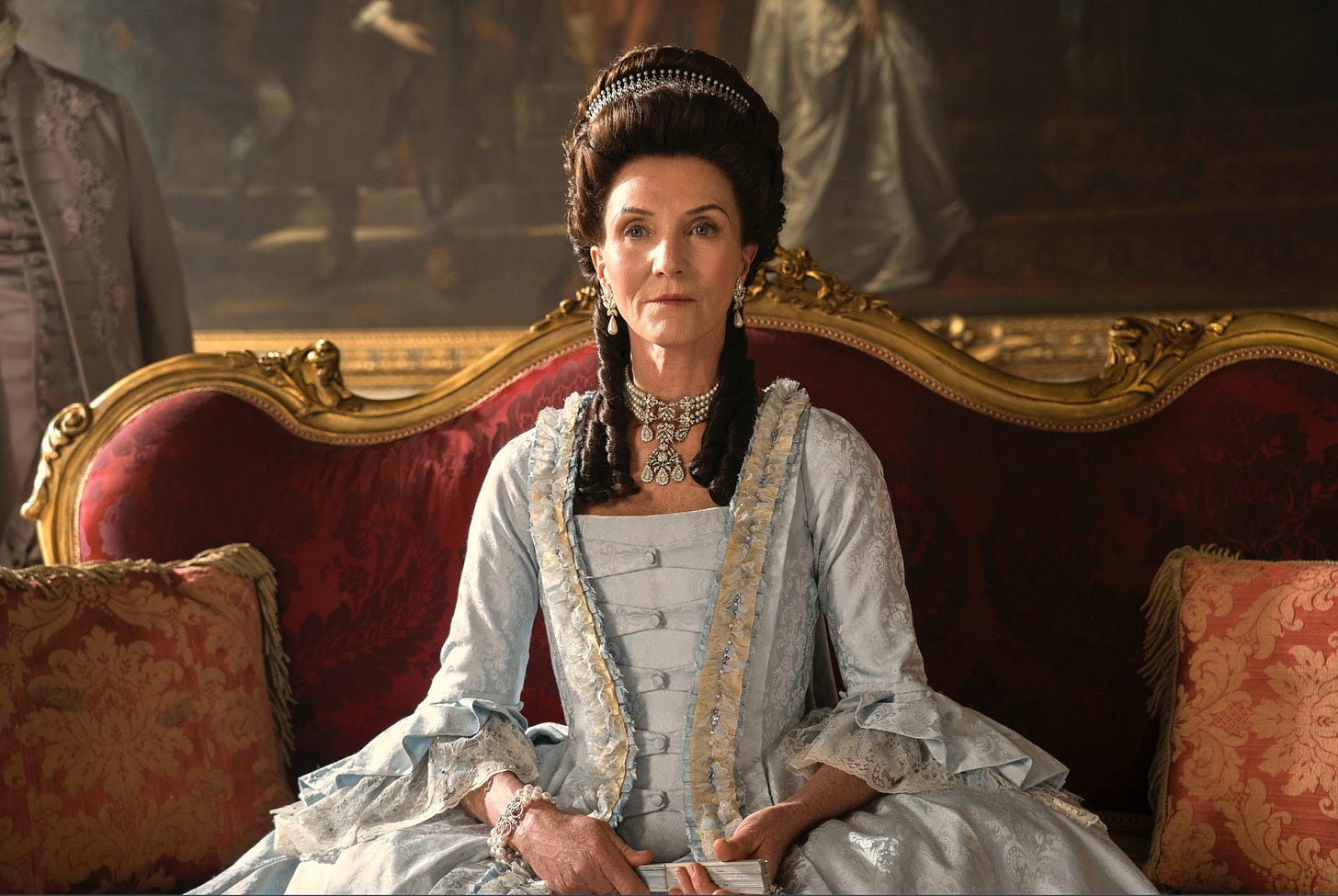



Comments
Post a Comment